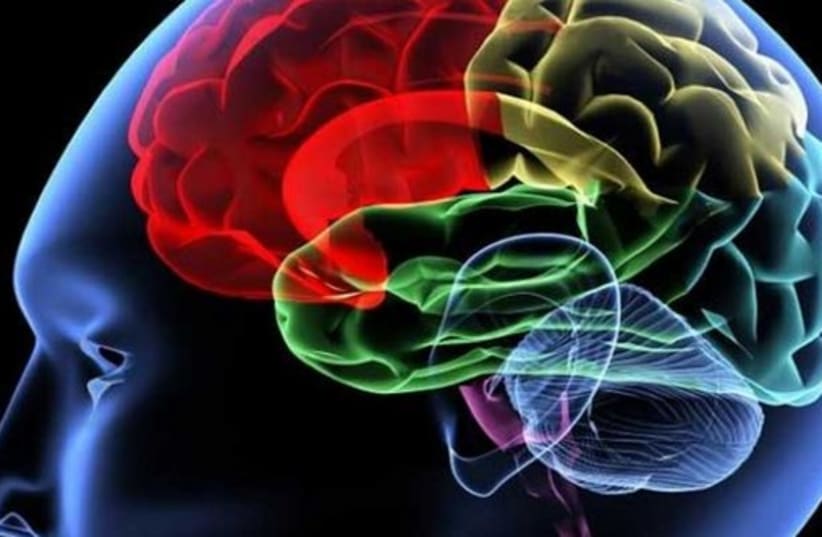Scientists have long linked inevitable age-related hearing loss to hair cells in the inner ear that become damaged or destroyed over time. But researchers at Johns Hopkins University School of Medicine in Baltimore say that the brain has much to do with the condition and that it may be possible to treat such hearing loss by re-training the brain to restrain the wildly firing neurons.
Age-related hearing loss (presbycusis) affects one-third of the world’s population. One hallmark of presbycusis is difficulty hearing in noisy environments, and it can be divided into two components – the aging ear and the aging brain. Until now, the role of the aging brain in presbycusis is not well understood.
Looking for answers about how the brain works amid age-related hearing loss and working with rodents, the researchers said they found that old mice were less capable than young mice of “turning off” certain actively firing brain cells in the midst of ambient noise. The result, they say, creates a “fuzzy” sound stage that makes it difficult for the brain to focus on one type of sound such as spoken words and filter out surrounding “noise.”
Their study was published under the title “Decreased Modulation of Population Correlations in Auditory Cortex Is Associated with Decreased Auditory Detection Performance in Old Mice” in the Journal of Neuroscience.
There's more to hearing than the ear
“There’s more to hearing than the ear,” said Patrick Kanold, a professor of biomedical engineering at Johns Hopkins. He noted that most people will experience some kind of hearing loss after age 65, like the inability to pick out individual conversations in a bar or restaurant.
He and his team recorded the activity of 8,078 neurons in the auditory cortex brain region of 12 old mice (16 to 24 months old) and 10 young mice (two to six months old). First, the researchers conditioned the mice to lick a water spout when they heard a tone. Then, the same exercise was performed while playing “white noise” in the background. Without the ambient noise, the old mice licked the water spout just as well as the young mice when they heard the tone.
When the researchers introduced the white noise, overall, the old mice were worse at detecting the tone and licking the spout than the young mice. The young mice tended to lick the spout at the onset or the end of the tone. Older mice licked it at the start of the tone cue but also showed licking before the tone was presented, indicating that they thought a tone was present when there wasn’t one.
Next, to see how auditory neurons performed directly during such hearing tests, the researchers used a technique called two-photon imaging to look into the auditory cortex in the mice. The technique uses fluorescence to identify and measure the activity of hundreds of neurons at the same time.
Under normal conditions, when brain circuitry worked correctly in the presence of ambient noise, some neuron activity increased when the mice heard the tone and, at the same time, other neurons were turned off. In most of the old mice, however, the balance tipped to having mostly active neurons, and the neurons that were supposed to turn off when the tone was played in the presence of a noisy background failed to do so.
The researchers also found that just before the tone cue, there was up to twice as much neuron activity in old mice than young mice, especially among males, causing the animals to lick the spout before the tone starts. A possible reason for that result, said Kanold, was that “in the old mice, the brain may be ‘firing’ or behaving as if a tone is present – when it’s not.”
Neuron activity in younger and older mice
The experiments with ambient noise also revealed that young mice experienced shifts in the ratio of active to inactive neurons, while older mice had more consistently active neurons overall. Thus, young mice could suppress the effects of ambient noise on neural activity while old mice could not, say the researchers. “In older animals, ambient noise seems to make neuron activity more ‘fuzzy,’ disrupting the ability to distinguish individual sounds,” added Kanold.
Optimistically, Kanold believes that because of the mammalian brain’s flexible learning potential, it can be “taught” to address the fuzziness in older animals, including humans. “There may be ways to train the brain to focus on individual sound amid a cacophony of noise,” he suggested.
More research is needed to precisely map the connection between the inability to shut off certain neurons and hearing loss amid ambient sound, including the brain circuits involved and how they change with age, as well as the potential differences between male and female animals, he concluded.

